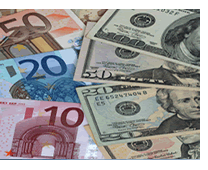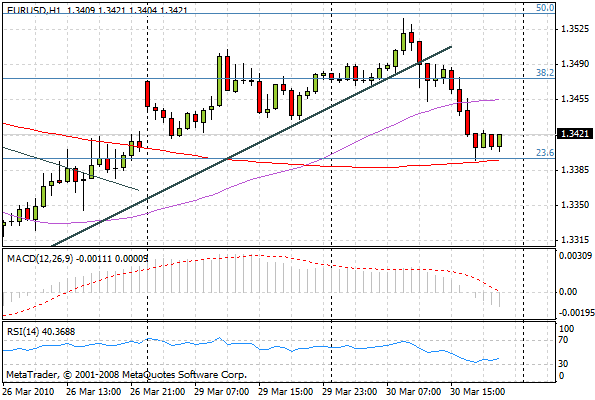Forex Market Review by Finexo.com
MAJOR HEADLINES – PREVIOUS SESSION
• US Jan. S&P/Case-Shiller House Prices out at -0.7% y/y, as expected, vs. -3.1% prior
• US Mar. Consumer Confidence out at 52.5 vs. 51.0 expected and revised 46.4 prior
• US Weekly ABC Consumer Confidence out at -45 vs. -44 prior
• UK Mar. GfK Consumer Confidence out at -15 vs. -13 expected and -14 prior
• AU Feb. Retail Sales out at -1.4% m/m vs. +0.3% expected and revised 1.1% prior
• AU Feb. Private Sector Credit out at 0.4% m/m, as expected and unchanged from prior
• AU Feb Building Approvals out at -3.3% m/m, +34.2% y/y vs. 2.1%/38.1% expected and revised -5.5%/52.7% prior resp.
• JP Feb. Labour Cash Earnings out at -0.6% y/y vs. -0.1% expected and revised -0.2% prior
• NZ NBNZ Business Confidence out at 42.5 vs. 50.1 prior
• JP Mar. Small Business Confidence out at 45.8 vs. 42.3 prior
• JP Feb. Housing Starts out at -9.3% y/y vs. -1.0% expected and -8.1% prior
• JP Feb. Construction Orders out at -20.3% y/y vs. +15.7% prior
________________________________________
THEMES TO WATCH – UPCOMING SESSION
(All times GMT)
• GE Unemployment (0755)
• EU ECB’s Trichet to speak (0845)
• EU Euro-zone Unemployment (0900)
• Swiss KOF Leading Indicator (0930)
• US MBA Mortgage Applications (1100)
• US ADP Employment Change (1215)
• CA Jan GDP (1230)
• US Chicago PMI (1345)
• US Factory Orders (1400)
• US NAPM – Milwaukee (1400)
Market Comments:
The EUR gave back most of the gains made during the Asian session yesterday with pressure coming from worsening news out of Europe – Ireland’s “Bad Bank” indicating it will apply a discount of 47% vs. 30% initial estimate on blocks of bad loans, Greek bonds trading poorly with tepid demand for the 12-year auction, an IMF downgrade to German growth and a rumoured French ratings downgrade (subsequently denied with Fitch affirming the AAA rating). GBP on the other  hand was buoyed by some positive data – Q4 GDP revised higher to 0.4% q/q, current account balance narrowed and Nationwide house prices were a touch firmer. For US markets, data was also on the firm side with US consumer confidence jumping to 52.5 from a revised 46.4 and beating consensus estimates of a rise to 51.0.
hand was buoyed by some positive data – Q4 GDP revised higher to 0.4% q/q, current account balance narrowed and Nationwide house prices were a touch firmer. For US markets, data was also on the firm side with US consumer confidence jumping to 52.5 from a revised 46.4 and beating consensus estimates of a rise to 51.0.
The month-/quarter- and Japanese financial year-end were expected to induce some volatility into currency markets on the last trading day of March, but this was only partly evident in the Asian session. The Tokyo morning fix saw heavy demand for the greenback and USDJPY rose to its highest since January 8th. Expect more volatility at the respective fixing times in Europe and the US and most analysts suggesting portfolio-rebalancing trades would be predominantly to sell dollars.
The Australian data was a disappointment and poured some cold water on the hawkish sentiment that had been building since the start of the week. Retail sales fell a surprising 1.4% in February from a month earlier versus consensus estimates of 0.3% growth and could indicate that the recent RBA rate hikes are starting to bite and the Ozzie consumer is adopting a more cautious stance. Building approvals were also softer than expected, falling for the second straight month contrary to market expectations of s rebound. Naturally, AUD fell off its perch above 0.92, though losses in Asia were limited to 50 pips or so. Given that market expectations for an RBA rate hike next week have been scaled back to 60+% from 75% previously, and possibly with more to come, it would appear a tall task for the AUD to regain the heady heights above 0.92.
Fed’s Fisher was on the wires saying that he doubts the current recovery will reverse course and instead sees it gathering momentum into 2010 and predicts growth of 3% this year. That said, he acknowledges that the economy is afflicted by excess capacity, high unemployment and an absence of price pressures.
Looking ahead, data releases in Europe focus on German and Euro-zone unemployment and Swiss KOF leading indicators. The US session sees the US ADP employment change released, the prelude to Friday’s non-farm payroll data, along with Chicago PMI and factory orders. Canada GDP for Jan is the only other release.
Forex Market Review & Analysis by Finexo.com
Disclaimer: Trading the foreign exchange (Forex) carries a high level of risk, and may not be suitable for all investors.






